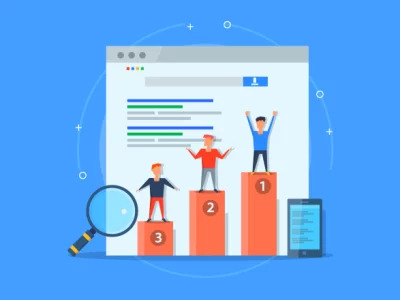Artificial intelligence (AI) is becoming an essential part of modern communication networks, especially in 5G environments. It helps improve performance, reliability, and security by processing data in real-time, predicting potential issues, and optimizing traffic flow. With its ability to analyze vast amounts of data from network activity, user behavior, and device interactions, AI enhances user experience and operational efficiency. However, while AI brings many benefits, it also introduces risks that can disrupt or compromise networks. So, now let us see How Safe Are AI Models in 5G Communication Networks along with User-friendly LTE RF drive test tools in telecom & Cellular RF drive test equipment and User-friendly Mobile Network Monitoring Tools, Mobile Network Drive Test Tools, Mobile Network Testing Tools in detail.
Why AI Matters in Communication Networks
AI plays a critical role in managing the complexities of 5G networks, which rely on a service-based architecture. For example, AI-powered systems can dynamically allocate resources based on demand, reducing delays and improving connectivity. These systems are also used to:
- Predict and Prevent Issues: AI can analyze patterns to foresee potential network problems, enabling proactive maintenance.
- Enhance Emergency Services: Smart network slicing ensures critical services like emergency response are prioritized.
- Optimize Energy Use: AI models help reduce power consumption by efficiently managing network resources.
Beyond commercial applications, AI is also vital in defense communications. It helps coordinate complex networks, such as those involving satellites, drones, and ground systems, ensuring smooth operations across air, land, and sea. However, the growing dependence on AI also makes these systems attractive targets for cyberattacks.
How Attackers Target AI Models
AI systems can be vulnerable at multiple stages, from training to deployment. Cybercriminals exploit these vulnerabilities to disrupt operations, steal sensitive data, or manipulate decision-making processes. Below are some common attack methods and ways to defend against them:
- Data Poisoning
What is it? Attackers tamper with the data used to train AI models, causing them to learn incorrect patterns and make poor decisions.
How it works: Adversaries introduce misleading or false data into the training dataset. For example, mislabeled data could trick the system into ignoring actual threats.
Example: In a 5G network, poisoned traffic data might lead an AI system to overlook suspicious activities, making it easier for attackers to breach the network.
Impact: The AI model’s accuracy decreases, leading to incorrect predictions or actions, particularly in critical situations.
Defense:
- Use secure data pipelines.
- Validate data thoroughly before using it for training.
- Model Evasion
What is it? Hackers create inputs that deceive the AI model, allowing them to bypass security measures.
How it works: Attackers make subtle changes to inputs, known as adversarial examples, that are undetectable to humans but confuse the AI system.
Example: In a 5G intrusion detection system, altered traffic patterns might let attackers evade detection and access restricted areas.
Impact: Security controls fail, leading to breaches.
Defense:
- Implement adversarial training to make models resilient to such inputs.
- Use robust architectures and limit access to the model.
- Model Inversion
What is it? Attackers reverse-engineer an AI model to uncover sensitive data or its decision-making process.
How it works: By querying the model and analyzing its responses, attackers infer information about the training data.
Example: In healthcare applications, attackers might reconstruct patient data by exploiting diagnostic models.
Impact: Privacy violations and exposure of sensitive information.
Defense:
- Use differential privacy techniques.
- Limit model exposure through secure infrastructure.
- Model Poisoning (Backdoor Attacks)
What is it? Attackers implant hidden instructions into an AI model during training, allowing them to manipulate it later.
How it works: The model is trained to respond abnormally to specific inputs that act as triggers.
Impact: Attackers can disrupt operations or steal data on demand.
Defense:
- Audit training pipelines regularly.
- Test for backdoor vulnerabilities.
- Model Extraction
What is it? Hackers replicate an AI model by querying it extensively, revealing its inner workings.
How it works: By sending numerous queries, attackers can reconstruct the model’s logic.
Example: In traffic management systems, stolen models could be used to exploit network weaknesses.
Impact: Proprietary models are exposed, enabling targeted attacks.
Defense:
- Set query limits and obfuscate responses.
- Use privacy-preserving techniques.
- Denial-of-Service (DoS) Attacks
What is it? Attackers overload the system’s resources, making the AI model unavailable.
How it works: Excessive requests consume computational power, slowing down or crashing the system.
Example: In AI-powered 5G services, a DoS attack could disrupt traffic optimization, degrading network performance.
Impact: Service outages and operational delays.
Defense:
- Implement rate limiting and load balancing.
- Use redundant infrastructure to handle increased demand.
- Trojan Attacks
What is it? Malicious code is embedded into an AI model, allowing attackers to manipulate it later.
How it works: The Trojan remains dormant until activated by specific inputs, then alters the model’s behavior.
Example: A Trojan in a 5G system might disrupt traffic management during peak hours, causing chaos.
Impact: Unpredictable model behavior and service disruptions.
Defense:
- Secure the development environment.
- Regularly audit model performance.
- Supply Chain Attacks
What is it? Attackers compromise third-party components used to build or deploy AI models.
How it works: Malicious code or vulnerabilities are introduced through libraries, frameworks, or pre-trained models.
Example: Tampered components in 5G monitoring systems might weaken their ability to detect threats.
Impact: Undetected vulnerabilities compromise security.
Defense:
- Audit third-party components and limit sources to trusted vendors.
- Maintain secure development environments.
Building a More Secure Future
As AI becomes more integrated into communication networks, understanding its vulnerabilities is crucial. While these systems offer unmatched efficiency and functionality, they are only as secure as the measures taken to protect them. Regular audits, robust infrastructure, and strict access controls are essential to safeguard AI-driven systems. By staying ahead of potential threats, organizations can ensure the safety and reliability of their networks in an increasingly connected world.
About RantCell
RantCell simplifies network testing, monitoring, and reporting with its innovative mobile app. It lets users assess key metrics like signal strength, download speeds, and latency in real-time, all from their smartphones. Designed for telecom operators and businesses, RantCell integrates a user-friendly app with a cloud platform to streamline network operations. Also read similar articles from here.













Comments